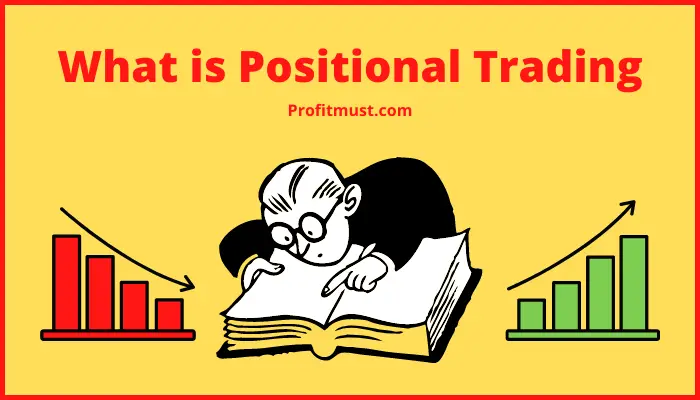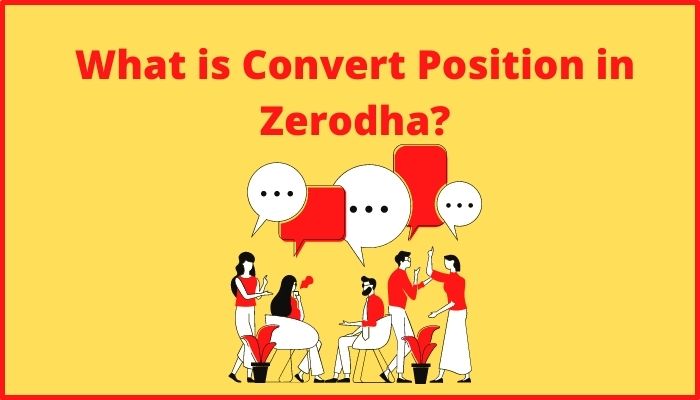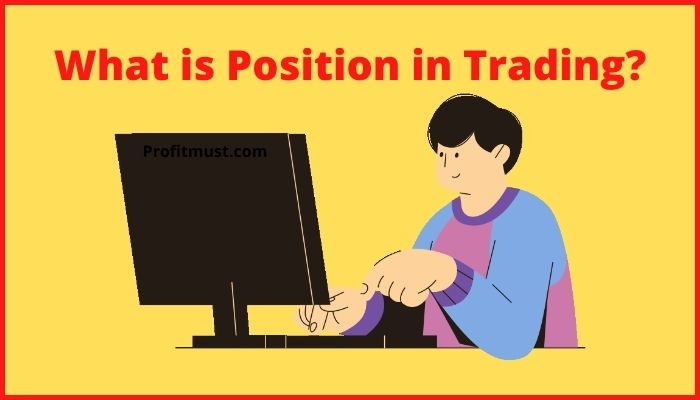There are many things in trading which you need to understand while you start your trading journey. Position is one of the major things in trading which you must consider learning properly. So let’s discuss what is position in trading with an example.
Table of Contents
What is Position in Trading?
A position is the representation of his or her financial interest, or exposure of a trader. It is the financial terminology for a trade that is now profitable or losing money (called as an open position) or has recently been withdrawn (identified as a closed position).
In other words, A position is the quantity of a stock, investment, or property that a person or other firm owns (or sells short).
When a trader or investor places a buy order, signalling bullish intent, or sells short stocks, signalling bearish intent, they are taking a position.
Taking a fresh position is accompanied by exiting or terminating the position at some time in the future.
Example of What Does Open Position Mean in Trading?
Imagine a stock starts trading at INR 1050 on NSE in the morning. If you had bought 100 stocks in the morning that means you have opened a trading position in the stock at INR 1050 and if you have exited the stock at INR 1100 in the evening that means you have exited the position at INR 1100 with a handsome profit.

Important Points About Open Position and Closed Position
- When a trader or investor initiates a trade that does not offset a current position, a position is created.
In reaction to the price trend, open positions might be long, short, or neutral. - By holding the reverse position, such as selling stocks that were bought to initiate a long position, positions can be completed for profit or loss.
- Positions can be closed willingly or forcefully, such as in the situation of a mandatory liquidation or a maturing contract.
- Depending on the instrument you’re trading, the term of a position can change. For instance, a’spot’ position is one that is for instant delivery of a currency or commodity, but a futures position is one that has a specified execution date.
Types of Position
After understanding what is position in stock market. Let’s talk about type of trading Position There are major two types of positions.
Long Positions
The most frequent positions are long positions that require the ownership of a securities or contract. Long positions profit when the price rises, and they lose when the price falls.
Short Positions
Short positions, on the other hand, profit when the actual security ‘s price declines. A short includes borrowing stocks, selling them, and then buying them back at a reduced price.
A position can be successful or unsuccessful relying on market developments, movements, and volatility. “Mark-to-market” refers to the process of adjusting the price of an open position to represent its current worth.
Neutral Positions
The neutral position is the third sort of position (or delta neutral). If the price of the actual asset goes up or down, the worth of this a position does not vary much.
However, fluctuations in interest rates, volatility, or currency rates affect neutral positions, resulting in profit or loss.
These positions are used by long-short market-neutral hedge funds, which frequently utilise the risk-free rate of return as their benchmark because they are unconcerned regarding stock market direction.
Understanding Position in Forex Trading
Positions might be speculative, risk-reducing, or a natural result of a company’s operations. A speculator can buy British pounds sterling on the expectation that their value would rise, and this is termed a speculative position.
A US company that trades with the UK, on the other hand, may be paid in pounds sterling, giving it a natural long FX position on the currency.
The speculator will keep the speculative position until they decide to sell it, either to make a profit or to reduce their losses.
Businesses that deal with the UK, on the other hand, cannot simply forsake their natural position on the pound sterling. Businesses may filter their income through an offsetting position, known as a hedge.
How Position in Share Market Works?
This is the process of open position and closed position in share market.

What does Open Position Mean in Trading?
A trading open position indicates that the investor is exposed to the market. Until the position is closed, there is a risk. A trading open position can last anywhere from minutes to years, based on the investor’s or trader’s style and goals.
Portfolios, in fact, are made up of a variety of trading open position. The degree of risk associated with an open position is determined by the position’s size in relation to the account’s size as well as the holding duration.
Longer holding periods are riskier in general since they expose you to more unanticipated market developments. Close out or hedge against open positions is the only method to avoid exposure.
Closing a Position
Positions must be closed in order to exit an open position. You need to sell a long position, whereas You need to buy a short position. Closing a position entails the exact opposite of what was done to open it in the first place.
The gross profit or loss on a securities position is the difference between the price at which it was opened and the price at which it was closed.
Positions can be ended for a variety of reasons, including taking profits or limiting losses, reducing exposure & generating cash etc.
For example, an investor who wants to offset a capital gains tax due will close a losing stock position in order to realise or crop a loss.
Time Period of Open Position and Closed Position
The holding period for a stock is the time during the open position and closed position in the asset. Based on the shareholder’s preferences and the nature of instrument, the holding duration can vary significantly.
Day traders, for instance, typically close out trading positions the same day they open them, whereas a long-term investor may close out a long position in a blue-chip company many years after it is first established.

Difference between Spot and Futures Positions
A “spot” or cash position is a direct investment in an instrument that is supposed to be delivered instantly. Spots can be given the very next day, the next business day, or even two business days later if the security situation requires it.
The price is determined at the time of purchase, but due to market movements, it is unlikely to settle at that price.
Non-spot transactions are known as “futures” or “forward positions,” and while the price is fixed on the transaction date, the settlement date, when the contract is concluded and the stock delivered, can be determined at any time in the future.
Because they do not include outright positions in the actual, these are indirect positions.
Conclusion
Position in share market is an important thing. However, loss or profit in a trading open position depends on the market trends & your analysis.
This is all from our side regarding what is a position in trading. Let us know your views about open position and closed position in the comment section.
Other Interesting Blogs related to What is Position in Trading?
What is Convert Position in Zerodha?
Frequently Asked Question About Trading Open Position
What is an open position in trading?
A trade that has been initiated but has not yet been finished out with an opposing trade is referred to as an open position. An open position exposes the investor to market risk, which persists until the position is liquidated.
What is position in Zerodha?
The positions tab displays all of your open positions for the day, including intraday, derivatives, and delivery transactions. The holdings report in Console displays a total of the stocks in your portfolio as of a specific date. You can also go back in time and look at the holdings report.
What is position in stock market?
A position is the quantity of a stock, investment, or commodity that an individual or other entity owns (or sells short). When a trader or investor places a buy order, signalling bullish intent, or sells short stocks, signalling bearish intent, they are taking a position.
What is a buy position?
You are basically purchasing an asset from the market when you start a 'buy' position. You sell your position back to the market when you close it. Buyers, often known as bulls, believe that the value of an asset will rise in the future. Sellers – or bears – believe its value is about to plummet.
What does taking a position mean?
Taking a position means buying or selling short an asset, which means owning or owing money on an asset or derivative instrument.

